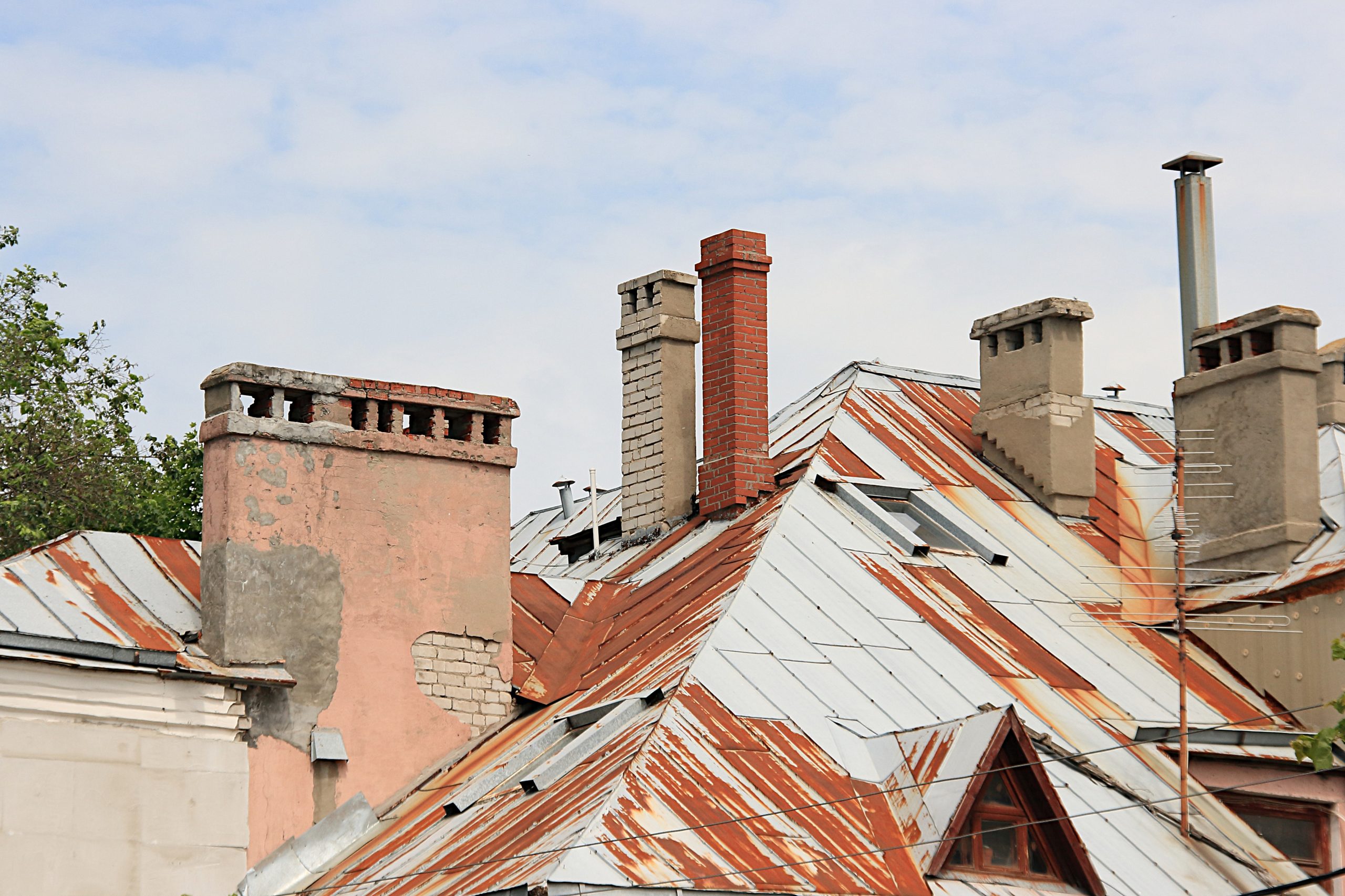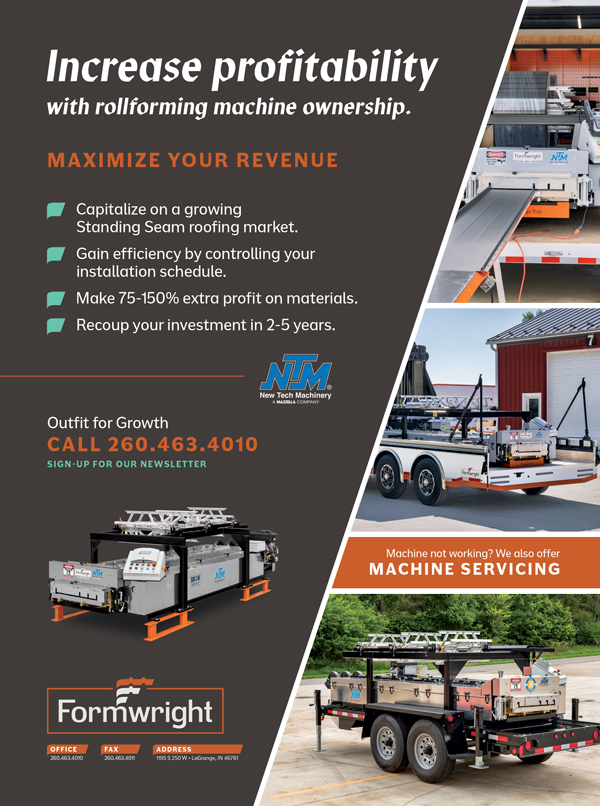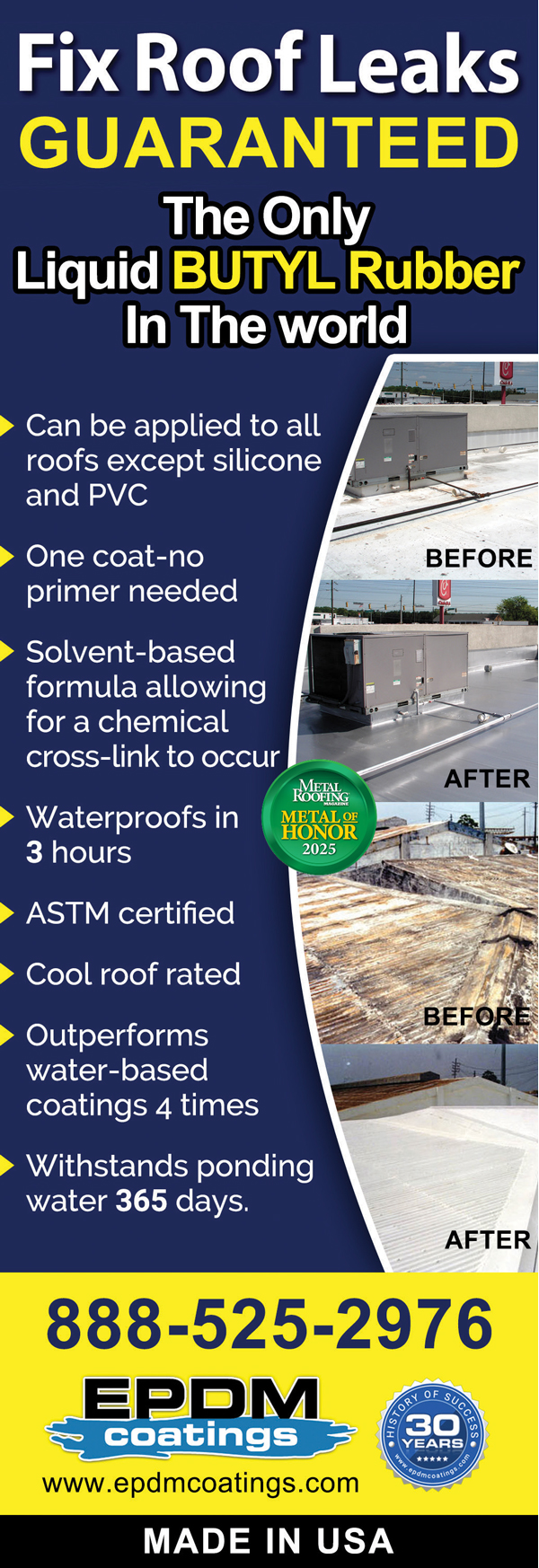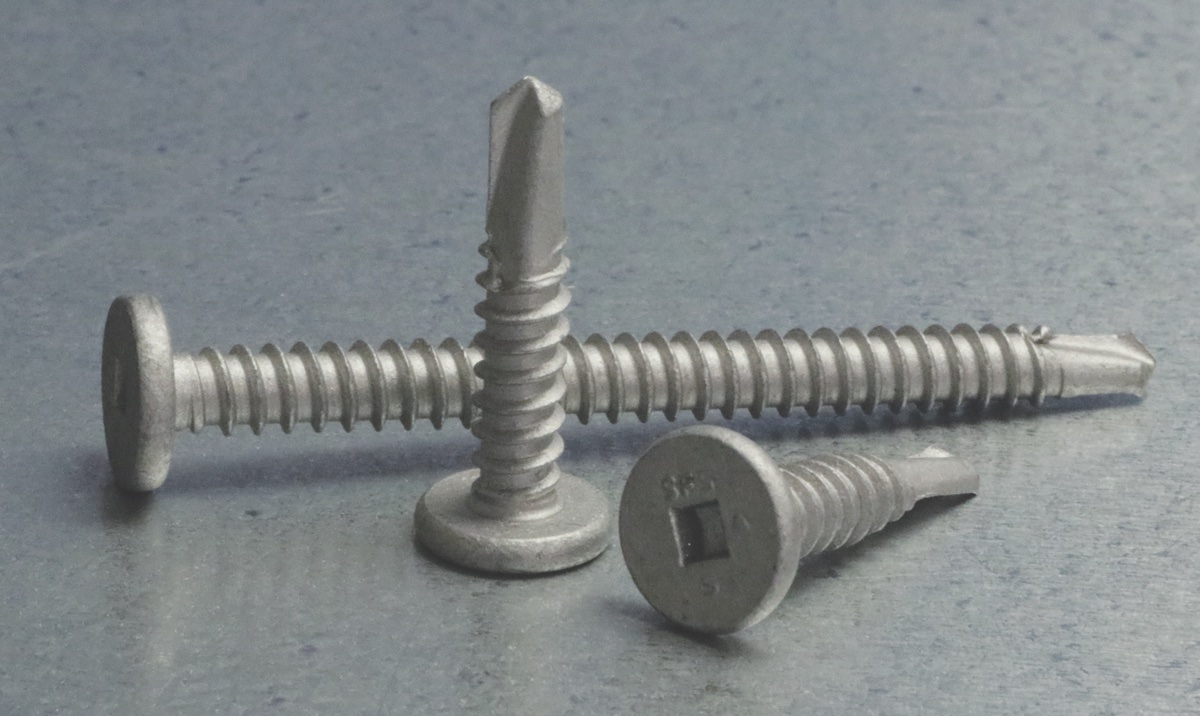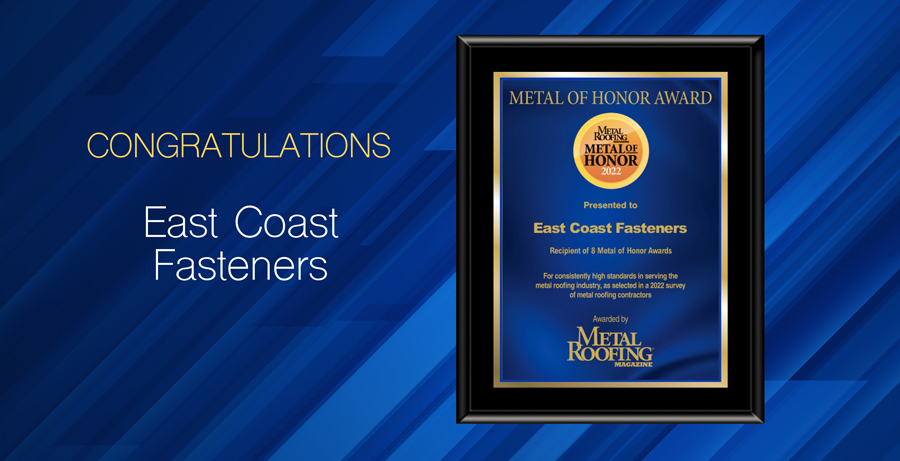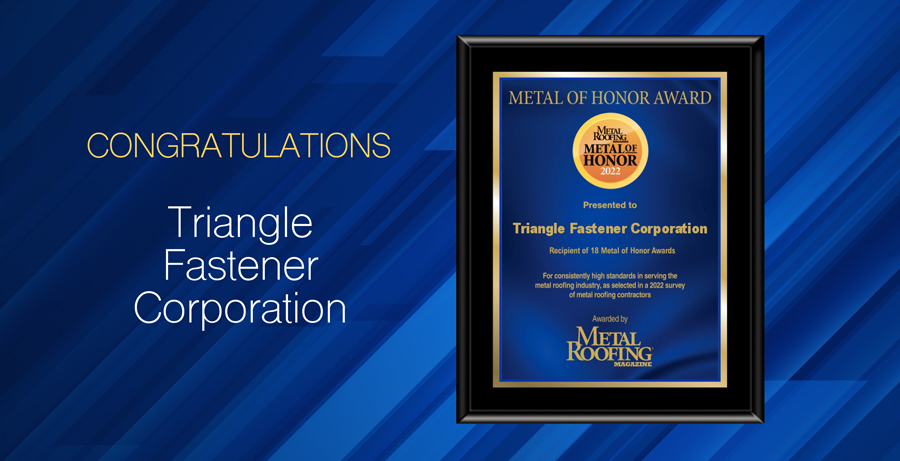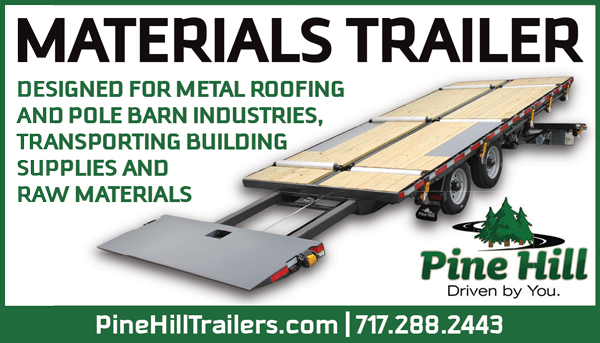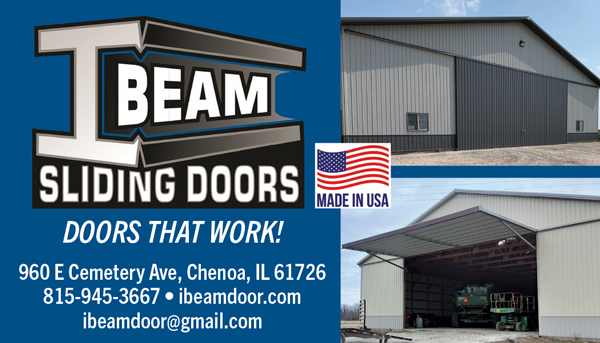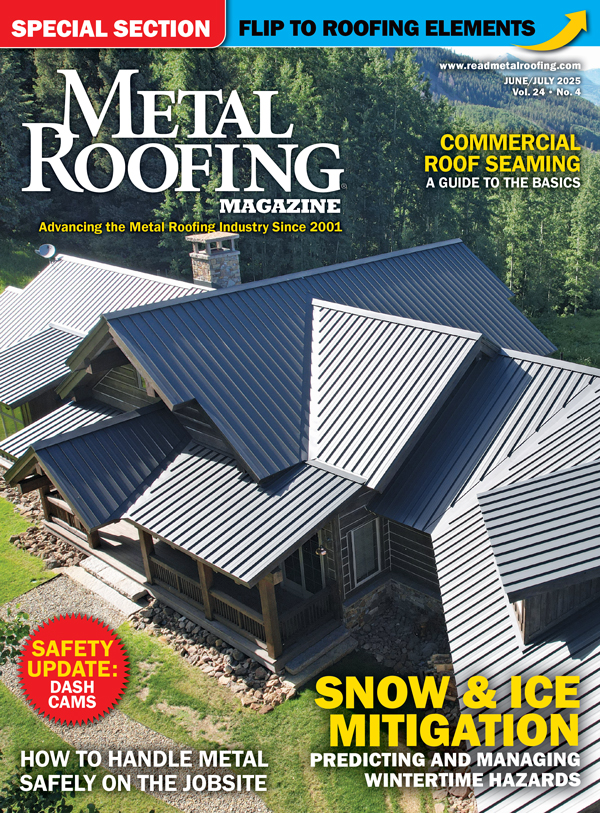Courtesy of the Metal Construction Association (MCA); www.metalconstruction.org
This technical bulletin provides guidance when working with different metals used in roofing installations. Most metals used for construction projects are chosen for their strength, corrosion-resistance, and longevity. However, some metals do not perform well when placed in contact with specific other metals or when exposed to certain chemical compounds. Users should be aware of compatibility issues and situations that may affect the performance of the installed roof.
Common causes for accelerated corrosion of metal roofs include excessive contact with chemically contaminated water, trapped moisture, and galvanic reaction due to dissimilar metals. When several of these causes occur simultaneously, the corrosive effect is multiplied.
There are precautions with regard to metal corrosion that should be understood by the user to avoid potential corrosive situations. Some of these basic material guidelines are common knowledge within the metal roofing trade, but when other trades are unaware of these issues, problems with incompatible materials may result. The installer is closest to the work, even when performed by other trades, and can alert the appropriate parties of any harmful corrosive effects on the metal roof that are discovered.
What Is Dissimilar Metal Corrosion?
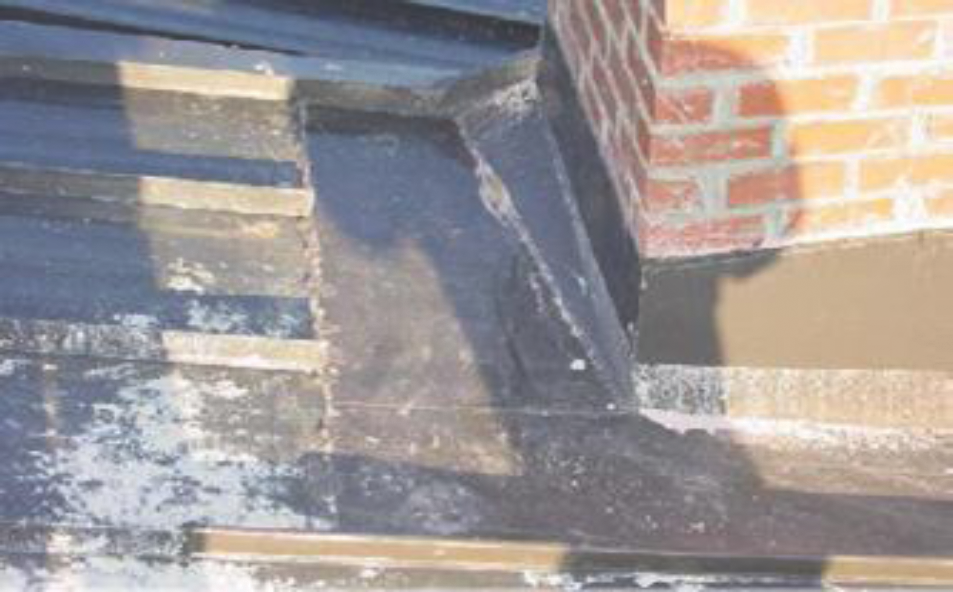
Galvanic corrosion (also called “electrolytic corrosion”) refers to accelerated corrosion induced when two dissimilar materials are coupled by an electrolyte. When a galvanic couple forms, one of the metals in the couple becomes the anode and corrodes faster than it would by itself. The other metal becomes the cathode and corrodes slower than it would alone. For dissimilar metal corrosion to occur, two conditions are required:
The different metals (or their oxide layers) are galvanically incompatible with each other.
Putting two different metals in electrolytic contact with each other can create an electrochemical reaction. In that reaction, the less noble metal acts as an anode and the more noble metal acts as a cathode. The anode passes electrons through the electrolyte to the cathode, causing oxidation. As this happens, the anode loses mass (corrosion). The severity of galvanic corrosion is determined by the relative compatibility of the metals in contact with each other as well as the behavior of their oxide layer compounds. In some cases, the oxides will actually retard, or arrest the process, but in other cases, the galvanic couple can result in rapid acceleration of the process, resulting in premature corrosive failure of the weaker, anodic metal or metallic coating.
Metals are in electrolytic contact (electrically joined to each other by moisture).
An electrolyte is simply an electrically conducting fluid. Almost any fluid falls into this category, including rainwater or snow-melt water. In order for galvanic activity to occur, there must be moisture present that couples the two metals electrically. The corrosion process will be more accelerated when the electrolyte is particularly aggressive. Airborne contaminants become waterborne when they are picked up in the precipitation. Sulfurous and nitrous oxides, for instance (from burning fossil fuels), when mixed with rainwater become very acidic. Chlorides contained in seawater or deicing salt are strong electrolytes.
The current flow between the cathodic metal and the anodic metal is independent of the surface area of either metal. However, the relative surface areas of coupled metals can affect the rate of corrosion of the anode. As a result, it is undesirable to have a large cathodic surface in contact with a relatively small anodic surface. The classic example is a galvanized (zinc-coated) nail in an aluminum or stainless steel roof. The zinc is the more anodic metal; hence the zinc coating will be depleted as it passes electrons to the more cathodic aluminum. Because there is a small nailhead surface with a thin coating of zinc surrounded by a large aluminum surface, the zinc coating will deplete quickly and completely and the nail will begin to red rust. The inverse galvanic couple however (an aluminum nail in a galvanized roof), poses no problem. Although zinc and aluminum are generally considered compatible, there are still these cautions.
Common Metals for Metal Roofing
The common metals used in metal roofing construction are zinc or hot-dip zinc-coated steel, aluminum, Al-Zn alloy-coated steel, stainless steel, terne-coated stainless steel, and copper. Some of these metals are compatible with each other and others are not. Generally, stainless steel performs well with other types of metal used in metal roofing. The two types of stainless steel alloys typically used for roofing are ferritic and austenitic microstructures. Austenitic stainless steels (304 and 316L) are substantially more corrosion-resistant than ferritic alloys (439 and 430). In marine or severe industrial applications, where chloride and other corrosive substances occur, 316L is a minimum requirement. The same applies for stainless steel fasteners.
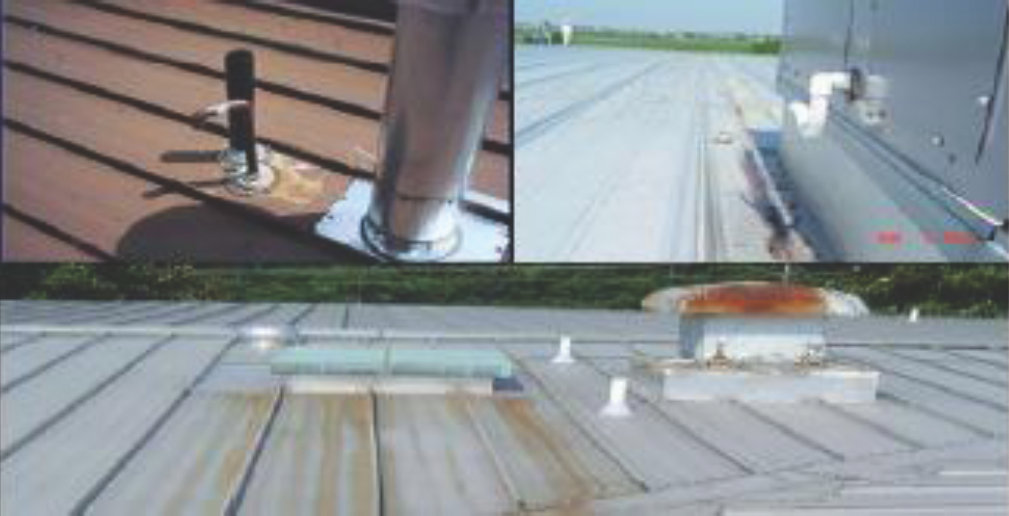
Copper performs well in contact with lead or stainless steel, but not other metals. In fact, copper has a very severe corrosive effect on steel, aluminum, and zinc. Care must be taken when using aluminum panels in contact with zinc as stated previously. Aluminum ancillary items such as fasteners, roof curbs, and clamps are compatible with Galvalume® (55% Al-Zn coated steel) and normally compatible with hot-dip galvanized steel.
Precautions
It is of critical importance to the installers, interface trades, and other users of metal roofing to note the following precautions:
Graphite is the primary material in the common pencil. Graphite is extremely corrosive to aluminum and aluminum alloys.
Extreme caution must be used by installers and other tradespeople to avoid electrolytic contact of zinc, aluminum or Al-Zn coated steel, and copper. This also includes exposure to pressure-treated wood and runoff from copper plumbing, HVAC equipment, and other copper-containing products. Copper salts can quickly stain and corrode the roof surface.
Chemical corrosion can also occur when no metals appear to be involved. For example, the use of fire-retardant or preservative-treated lumber should be avoided with all metal roofing materials, except copper and certain types of stainless steel. The chemicals used in treated wood often have high concentrations of copper salts and other corrosive elements. When the materials get wet, these corrosives become waterborne and can dissolve and attack the anodic metal roofing material. These effects are intensified because lumber is porous and traps moisture against the metal, which accelerates corrosion. Preservative-treated lumber and like products should not be used on metal roofs. Even untreated lumber and rubber pads pose a risk of moisture entrapment. If the use of treated or untreated lumber or rubber pads cannot be avoided, suitable stainless steel grades can be used (304 or 316L depending on location).
Aluminum and metallic coatings used on steel sheet that contains aluminum (Galvalume®/Zincalume®) have a severe sensitivity to strong alkalis. Sometimes highly alkaline cleansers are used in the cleaning of certain rooftop HVAC equipment. This practice should be avoided on such roofs. Cementitious materials are also very alkaline, including concrete, brick and block mortar, and stucco. These mortars pose a severe threat to the above metals when wet. Corrosion caused by these alkalis is apparent by a conspicuous black and/or white stain on the panel surface, which will be followed by red rust. When dry and freely draining, cement mortars do not seem to be a chemical problem, but they are highly abrasive and can damage the metal roof surface. Construction trades should be sequenced so that adjacent masonry work is complete before roof materials are put in place. If this is not possible, the roof surface must be thoroughly protected. If a spill of alkalis occurs, it must be immediately removed and thoroughly cleaned and rinsed with clean water to prevent damage. Be aware, most masonry cleaners contain hydrochloric acid, which will affect most metals. Stainless steel 316L will be the most resistant to those types of cleaners.
Preventing Dissimilar Metal Corrosion
The following examples show how dissimilar metal corrosion can be prevented:
Use separation barriers to prevent reaction:
When applicable, dissimilar metals should be separated with a barrier. Barriers include bituminous membranes or coatings of sufficient thickness that will coat the more noble/cathodic metal, separating the two dissimilar metals and stopping the electrical contact. Typical prepainted metal roofing products are not coated to meet this criterion.
Protective pads:
Protective pads should not be used on the surface of a coated steel or aluminum roof as they promote capillary moisture entrapment, which can lead to premature corrosion.
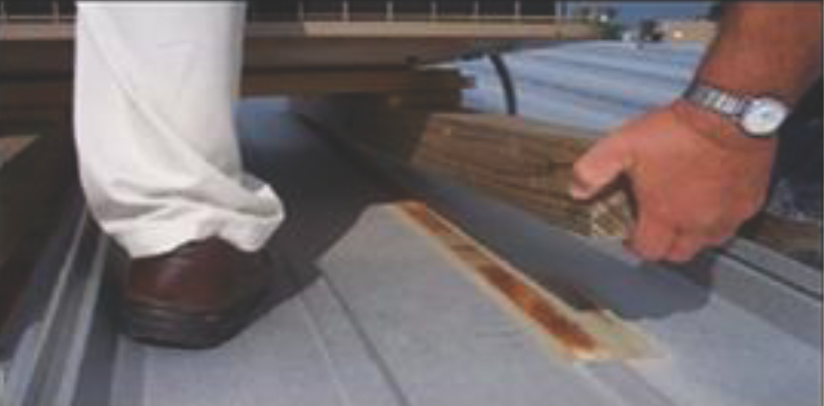
Wood blocking:
Wood blocking should not be used on the surface of a coated steel or aluminum roof as it promotes capillary moisture entrapment, which can lead to premature corrosion.
Water runoff from dissimilar metals:
Even if two dissimilar metals do not appear to be in direct physical contact, dissimilar metal corrosion can still occur. Water runoff from a more noble/cathodic metal onto a less noble/anodic metal can cause corrosion and staining. An example of this is a copper (cathodic) roof or pipe that drains water onto a Galvalume® (anodic) surface. Another example is drainage of condensate from a rooftop air conditioning unit or swamp cooler onto a metal roof. Condensate can be a stronger electrolyte than typical rainwater. Instead of such practice, the effluent should be plumbed to a drain inside or outside the building. Water runoff from rusty areas or runoff water containing rust will affect and corrode all fasteners and roofing metals.
Summary
Being aware that dissimilar metal corrosion potential exists and understanding how galvanic reactions take place will help in the selection of metals used on roofing installations. Potential problems can be eliminated before they occur, saving money and time while extending the life of a roof. Before different metals are specified for a metal roofing project, it is advisable to consult with the metal panel manufacturers to determine if galvanic corrosion is a threat. Fastener selection is equally important as this could also lead to dissimilar metal corrosion. MR
References: MCA Metal Roof Installation Manual, 2014; MCA Technical Bulletin, Fastener Selection Guide, 2014; American Galvanizing Association, www.galvanizeit.org.
This bulletin is for general information only. The bulletin is designed to delineate areas requiring consideration. Information contained in the bulletin should not be used without first securing competent advice with respect to its suitability for any given application. MCA does not assume responsibility and disclaims any representation or warranty, express or implied, that such information is suitable for any general or particular use. Anyone making use of the bulletin assumes all liability resulting from such use. The existence of the bulletin does not in any respect preclude a member or nonmember of MCA from manufacturing, selling, or specifying products not conforming to the bulletin, nor does the existence of an MCA bulletin preclude its voluntary use by persons other than MCA members. The bulletin does not purport to address all safety problems associated with its use or all applicable regulatory requirements. It is the responsibility of the user of the guideline to establish appropriate safety and health practices and to determine the applicability of regulatory limitations before use of the bulletin. It is the responsibility of the end user to verify the applicability of this information with the local building and fire officials.


